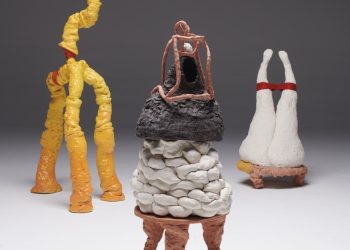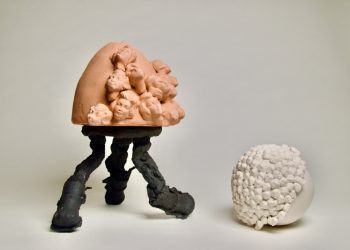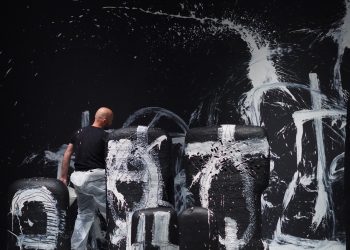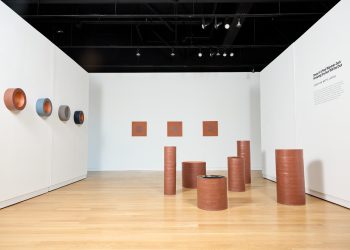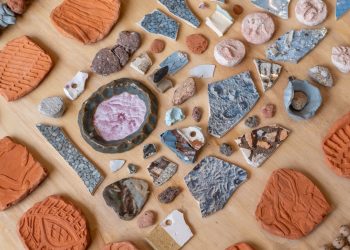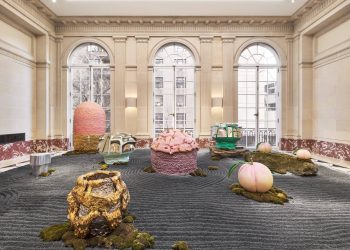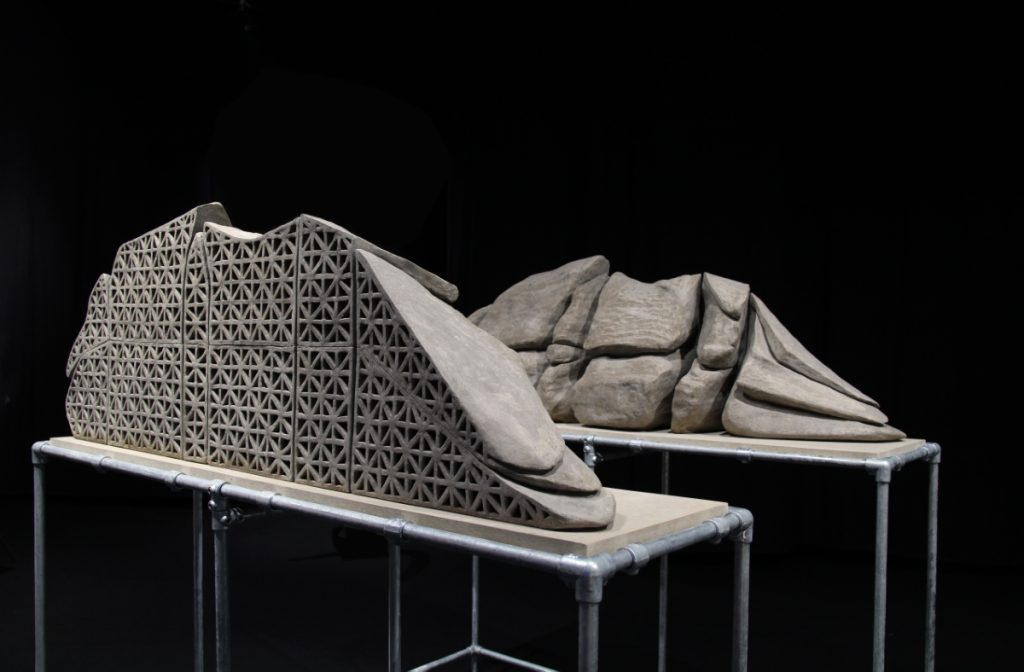
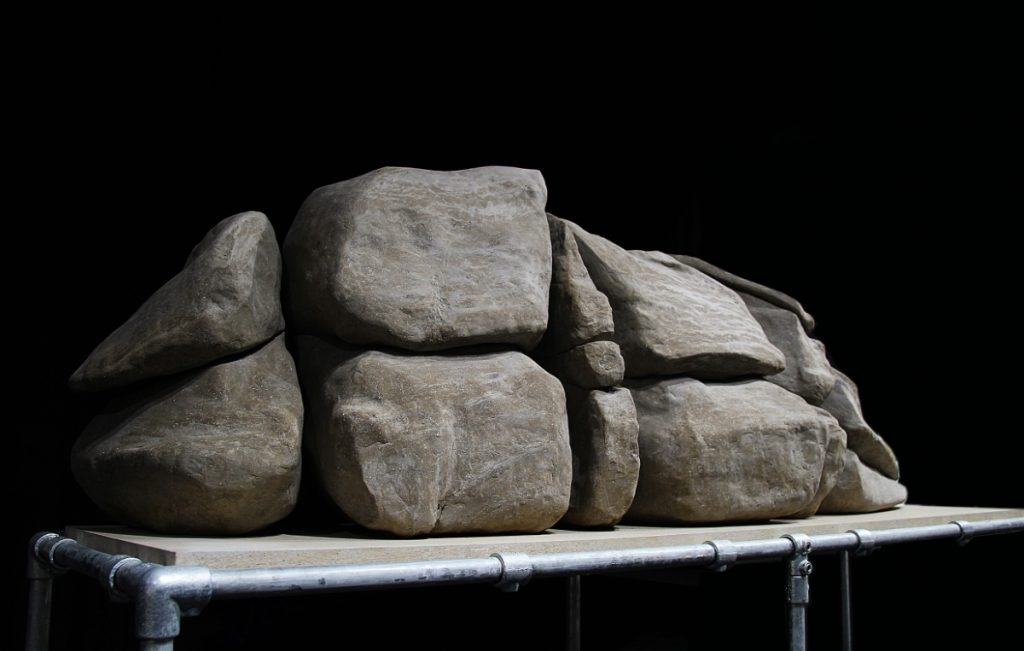
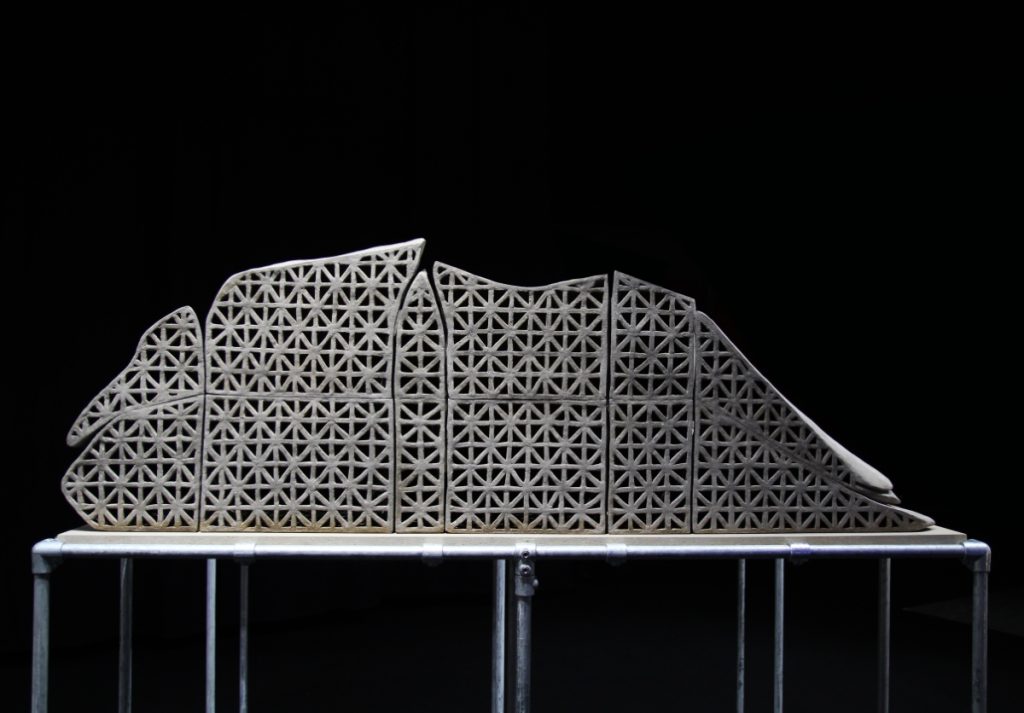
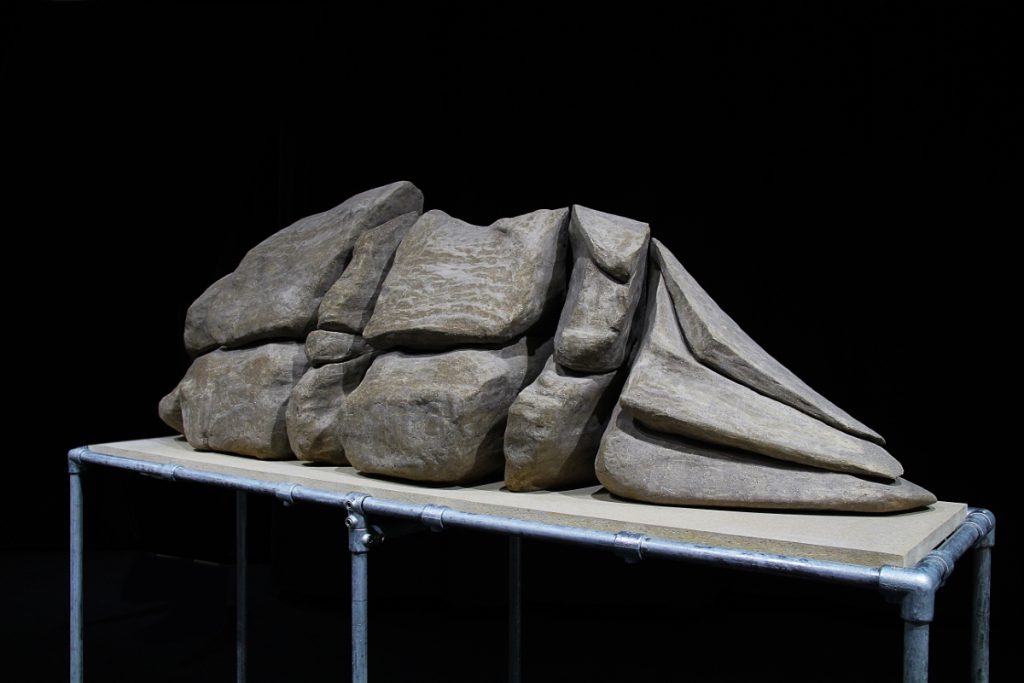
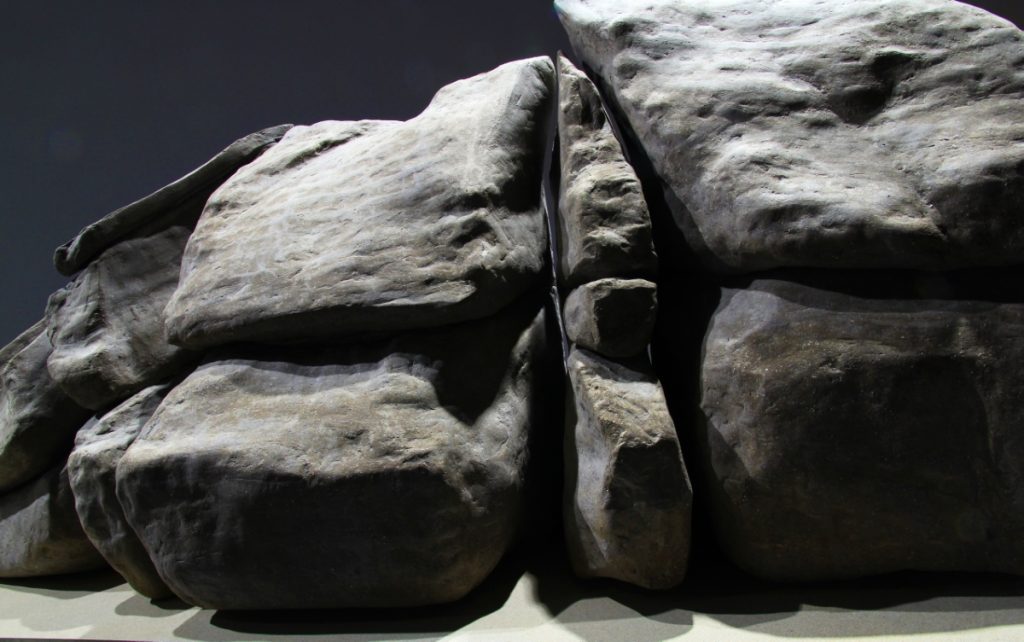
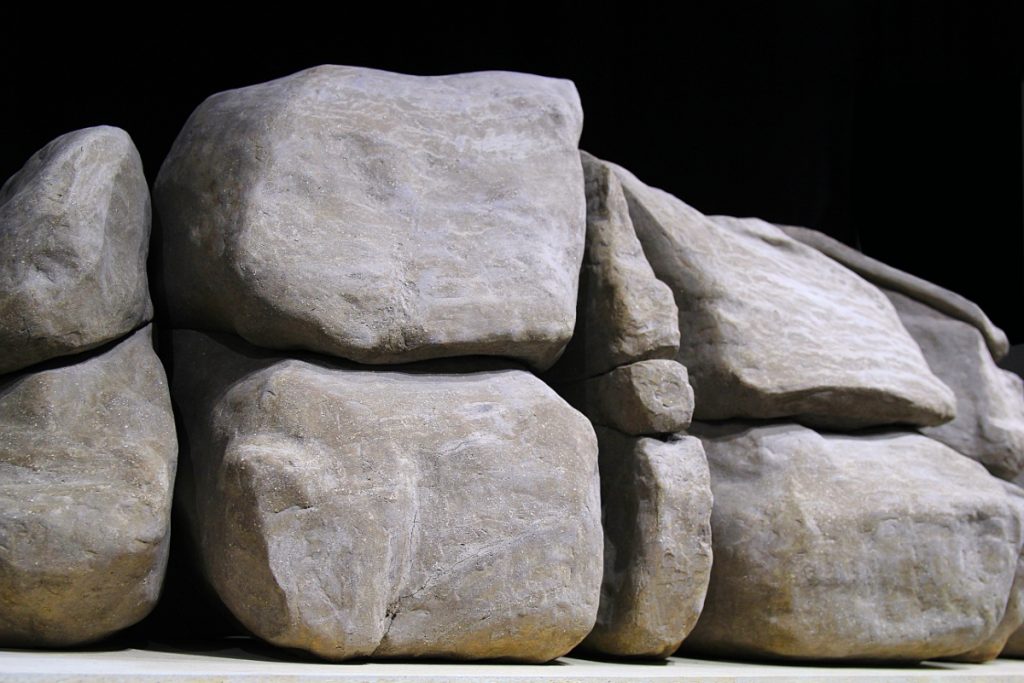
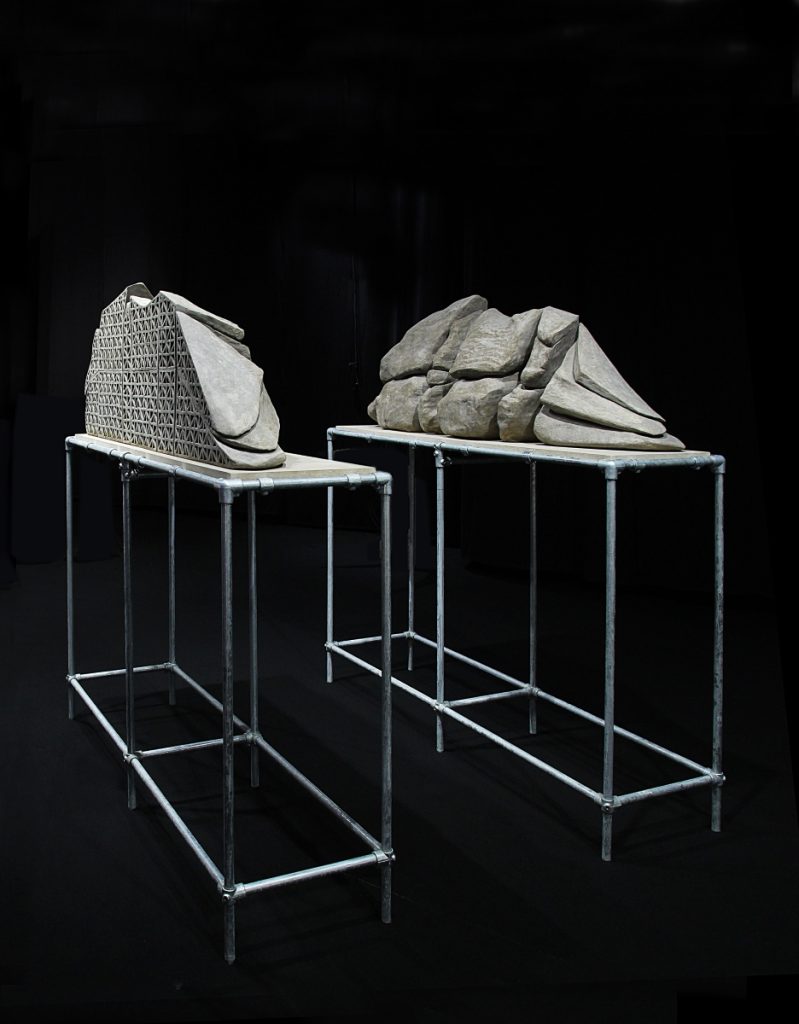
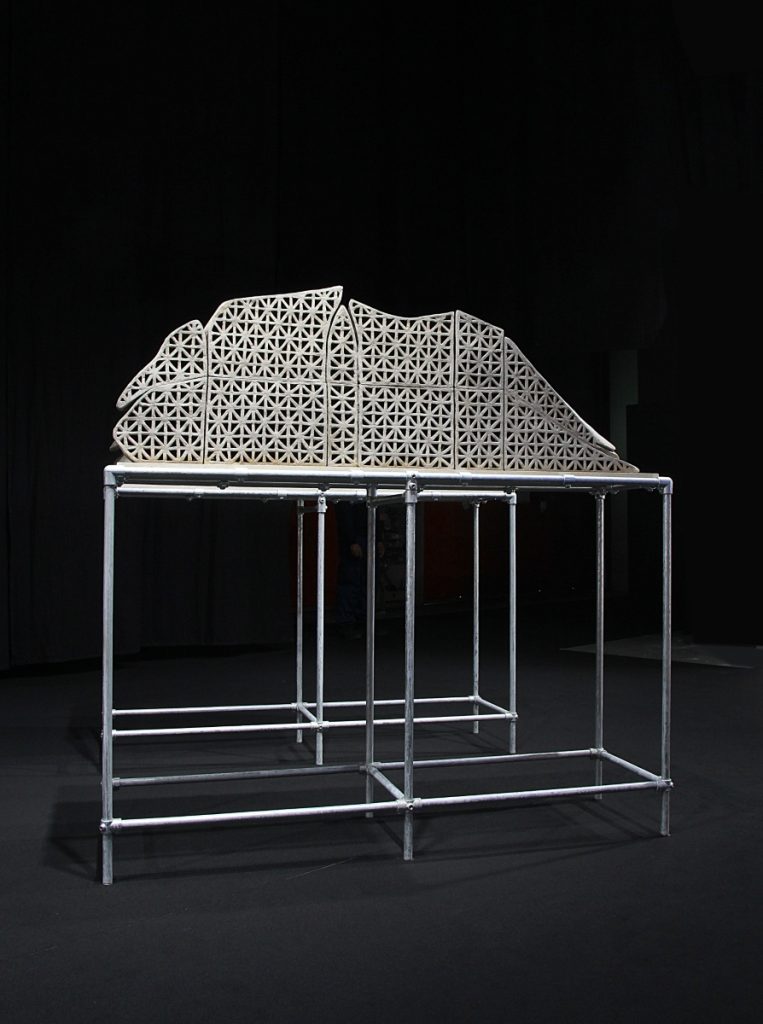
Paul March: Claustra, 2015
The claustrum is a thin layer of grey matter in the brain that links cortical and subcortical areas. It is assumed to have an important but, as yet, ill-understood intermediary role between so-called higher (conscious) and lower (unconscious) brain activity. In a paper I wrote with cognitive psychologist Fred Vallée-Tourangeau in 2019, I describe in detail the development of Project Claustra Insight Out: Making Creativity Visible. More briefly, when I reviewed the creative evolution of Claustra, what I found interesting was how elements in the external world, geological features (Hay Tor in Dartmoor, UK, the Jura mountains in France), an archaeological artifact (the Vogelherd Lion), an Islamic architectural element (the mashrabiya) blended together to make something that goes beyond a chimeric mixture of its parts to become a unique dissolution and reconstitution of its progenitors. These elements were brought together, not in the head but in the outside world through the sculpting gestures of clay – a process that Fred and I called “outsight” – to distinguish it from “insight” – the term commonly used to describe how ideas form in the head.
Claustra, 2015, Stoneware, 1.8 x 2 x 1.8m. © Paul March



